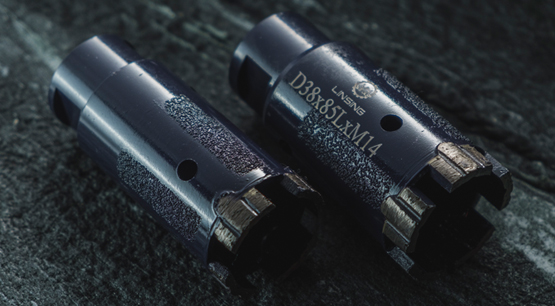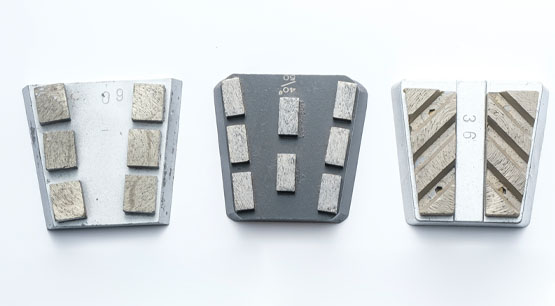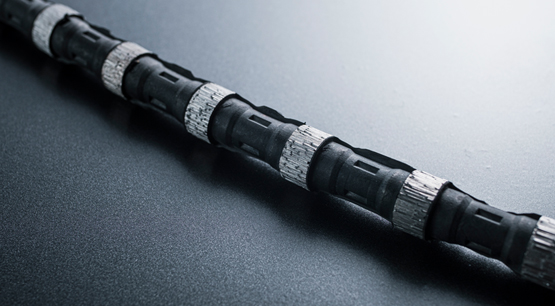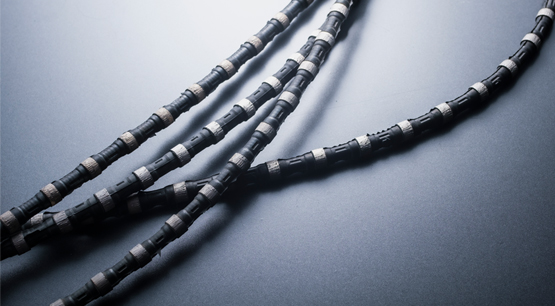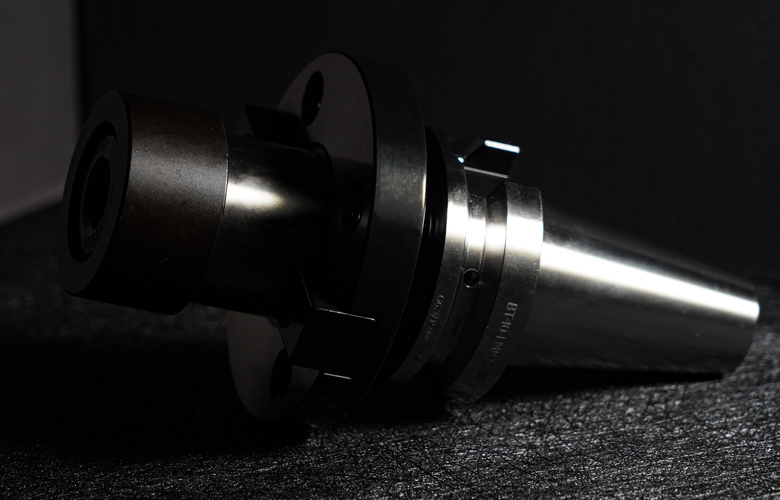Diamond wire saws are widely recognized for their ability to cut through extremely hard materials such as concrete, granite, and marble. But can they cut 45# steel, a medium-carbon structural steel known for its hardness and toughness? The answer is yes, but the process involves understanding the principles and mechanisms behind diamond wire saw operation. This detailed explanation will cover the principles, mechanisms, and practical aspects of using a diamond wire saw to cut 45# steel.
I. Introduction to 45# Steel
45# steel, also known as medium-carbon steel, has the following characteristics:
- Composition: Typically contains about 0.42-0.50% carbon, 0.50-0.80% manganese, and trace amounts of silicon, sulfur, and phosphorus.
- Properties: Known for its good mechanical properties, including strength, toughness, and wear resistance. It has a tensile strength of approximately 600-750 MPa and a yield strength of 355 MPa.
- Applications: Commonly used in the manufacture of mechanical parts, such as gears, shafts, axles, and bolts, due to its excellent balance of strength and machinability.
II. Diamond Wire Saw: Composition and Cutting Principles
A. Composition
- Steel Wire: The core component made of high-strength steel, providing the necessary tensile strength and flexibility.
- Diamond Beads: Small cylindrical segments embedded with diamond particles, distributed along the wire. These are the primary cutting elements.
- Plastic or Rubber Bonding: Encapsulates the wire and diamond beads, providing protection, flexibility, and reducing vibrations during cutting.
- Connectors: Metal joints at both ends of the wire, ensuring continuity and integrity during the cutting process.
B. Cutting Principles
- Abrasive Action: The hardness of diamond (10 on the Mohs scale) allows it to cut through almost any material, including hard steels like 45# steel. The diamond particles abrade the material as the wire moves.
- High-Speed Rotation: The wire saw operates at high speeds, typically driven by an electric or hydraulic motor. The rotational motion generates the cutting force necessary to grind through the steel.
- Cooling and Lubrication: Coolant (usually water) is applied to the cutting zone to dissipate heat, reduce friction, and carry away debris, preventing overheating and preserving the integrity of the wire and diamonds.
III. Mechanisms of Cutting 45# Steel with a Diamond Wire Saw
A. Factors Influencing Cutting
- Wire Speed: Higher speeds increase cutting efficiency but can also lead to faster wear of the diamond beads.
- Feed Rate: The rate at which the wire is fed into the material. A balanced feed rate prevents excessive force that could damage the wire.
- Tension: Proper tension is crucial to maintain the wire’s straightness and prevent slack, which could cause uneven cuts or breakage.
B. Cutting Process
- Preparation: Secure the steel piece in place. Ensure the diamond wire saw is correctly set up, with appropriate tension and alignment.
- Initiation: Start the motor to initiate the wire's rotation. Gradually increase speed to the optimal cutting velocity.
- Cutting: As the wire saw penetrates the steel, maintain a steady feed rate and apply coolant continuously. Monitor the process to adjust parameters as needed.
- Completion: Once the cut is complete, carefully stop the motor and remove the cut steel piece. Inspect the wire saw for any signs of wear or damage.
IV. Advantages and Challenges of Cutting 45# Steel
A. Advantages
- Precision: Diamond wire saws offer high precision cuts, which are crucial for machining parts from 45# steel.
- Versatility: Capable of cutting complex shapes and sizes with minimal material wastage.
- Reduced Force: The abrasive action of diamond particles reduces the force required compared to traditional cutting methods, minimizing the risk of deformation.
B. Challenges
- Wear and Tear: Diamond beads and the wire itself can wear out quickly when cutting hard materials like 45# steel.
- Cooling Requirements: Effective cooling is essential to prevent overheating, which can degrade the wire and diamonds.
- Setup Time: Ensuring proper tension, alignment, and feed rate requires careful setup and monitoring.
V. Case Studies
A. Industrial Application: Gear Manufacturing
- Scenario: Cutting 45# steel rods to manufacture gears.
- Procedure: Diamond wire saw used to slice steel rods into precise lengths. Coolant system integrated to manage heat.
- Outcome: High precision cuts achieved with minimal material waste. Proper maintenance of wire saw ensured consistent performance over multiple cuts.
B. Custom Fabrication: Automotive Parts
- Scenario: Custom fabrication of 45# steel components for automotive applications.
- Procedure: Custom shapes cut from steel plates using diamond wire saw. Variable feed rates applied based on the complexity of cuts.
- Outcome: Complex shapes accurately cut, enabling high-quality assembly of automotive parts. Effective cooling and lubrication extended the lifespan of the wire saw.
VI. Maintenance and Care of Diamond Wire Saws
A. Regular Inspection
- Wear and Tear: Regularly inspect the diamond beads and steel wire for signs of wear. Replace worn components promptly.
- Connectors: Ensure connectors are intact and secure, preventing sudden breakage during operation.
B. Cleaning and Lubrication
- After Use: Clean the wire saw thoroughly after each use to remove debris and residue. This prevents buildup that can affect cutting efficiency.
- Lubrication: Apply appropriate lubricants to reduce friction and extend the life of the wire saw.
C. Storage
- Conditions: Store the wire saw in a dry, cool environment to prevent rust and degradation.
- Handling: Properly coil the wire saw when not in use to avoid kinks and damage.
VII. Conclusion
Diamond wire saws are highly effective tools for cutting through hard materials, including 45# steel. Their ability to maintain precision and efficiency in such demanding applications relies on understanding the principles of abrasive cutting, proper setup and operation, and diligent maintenance. By selecting high-quality equipment, adhering to best practices, and managing environmental factors, diamond wire saws can achieve exceptional results in cutting 45# steel, making them invaluable in industries ranging from construction to manufacturing.
This comprehensive guide should provide a thorough understanding of the principles, mechanisms, and practical considerations involved in using diamond wire saws to cut 45# steel. Proper implementation and maintenance of these techniques will ensure optimal performance and longevity of the cutting tools.




